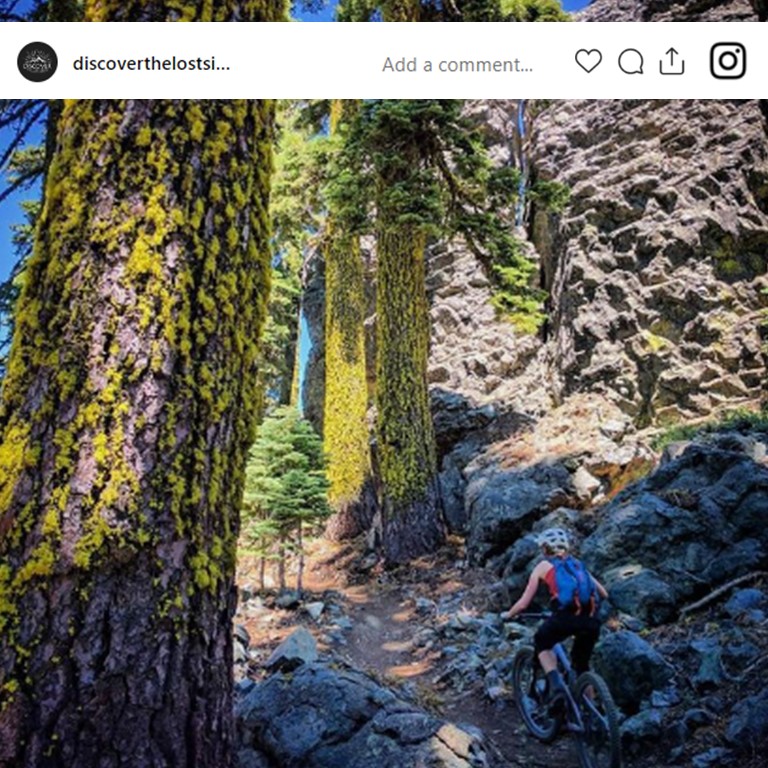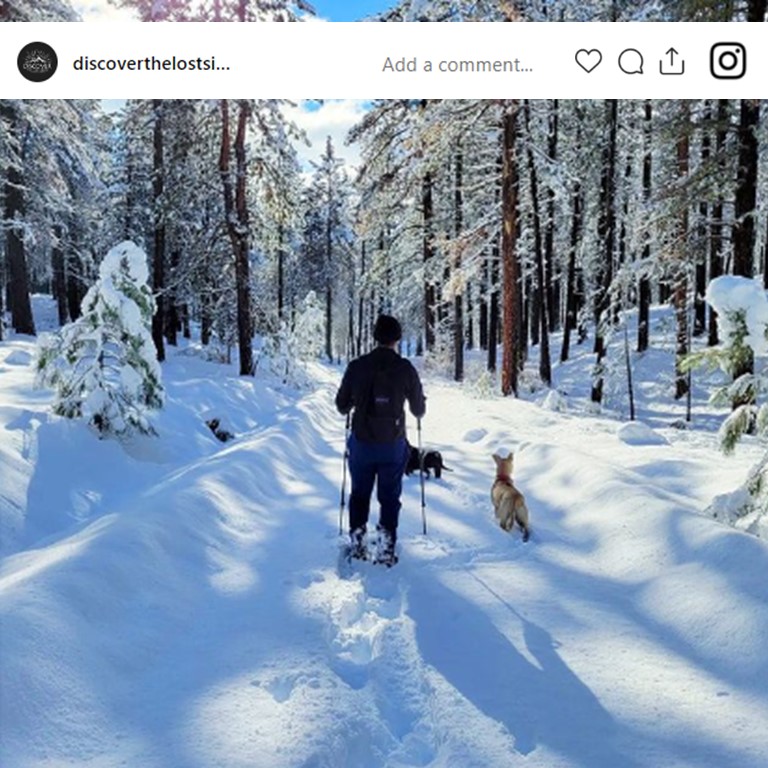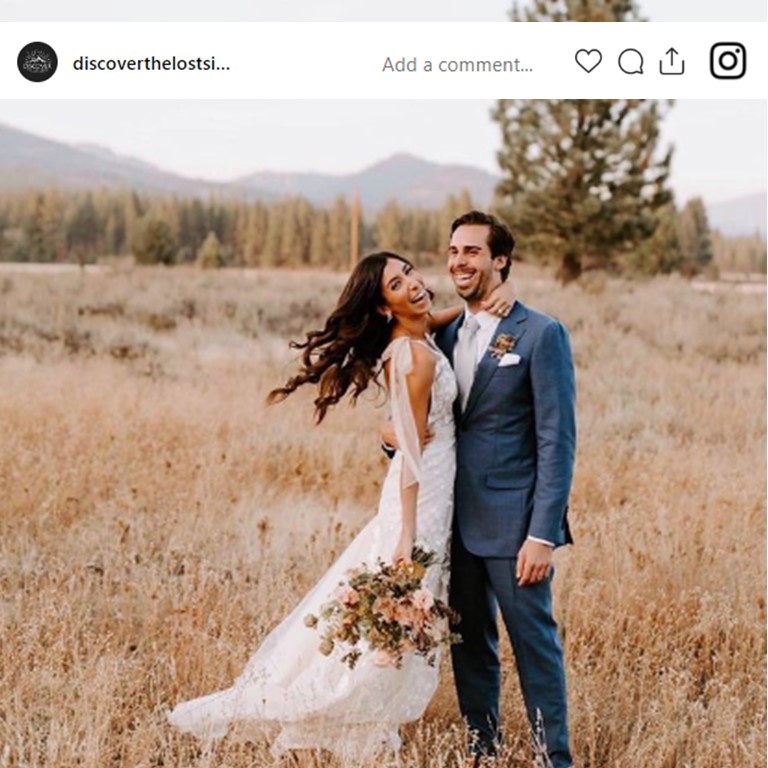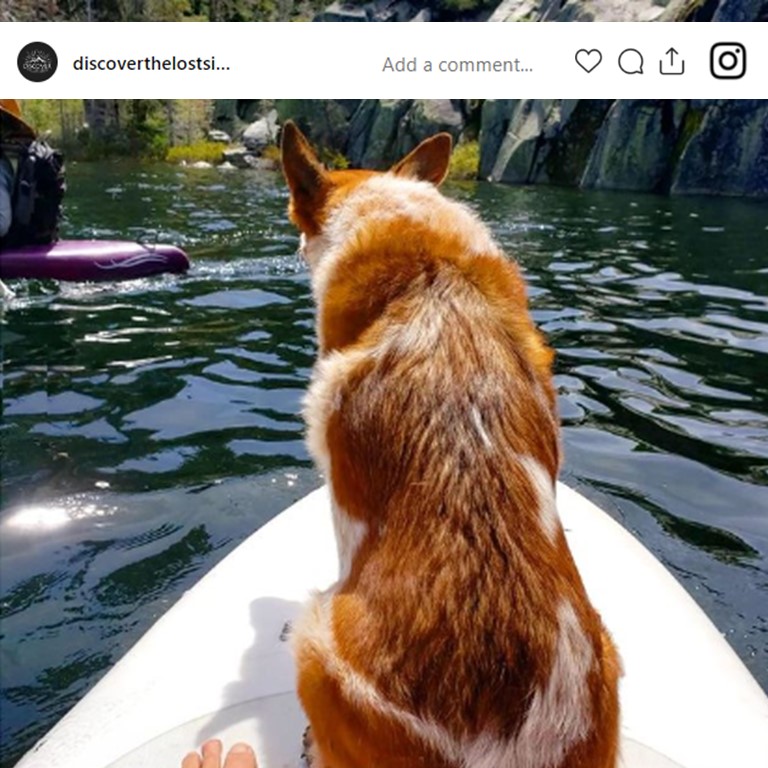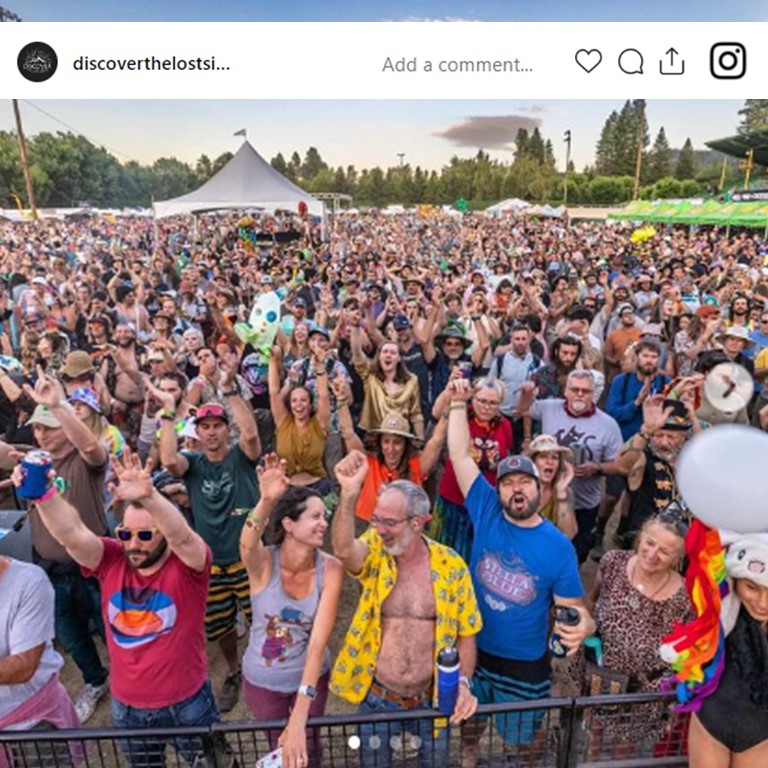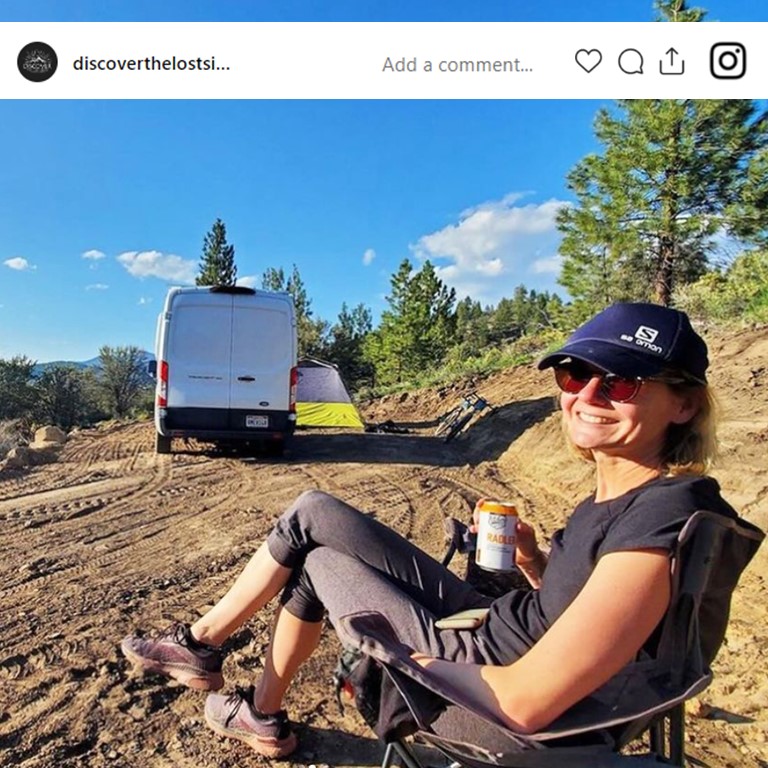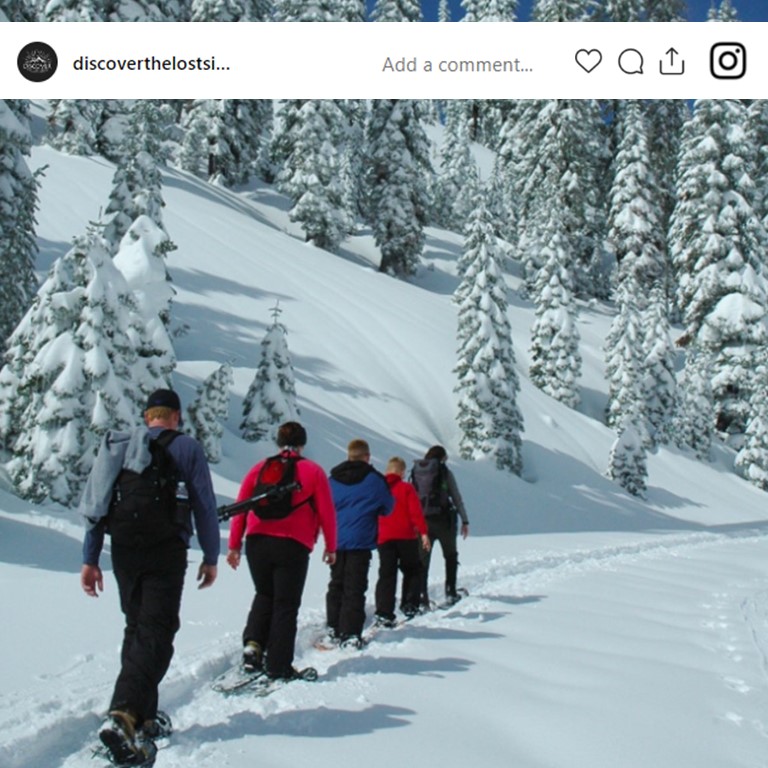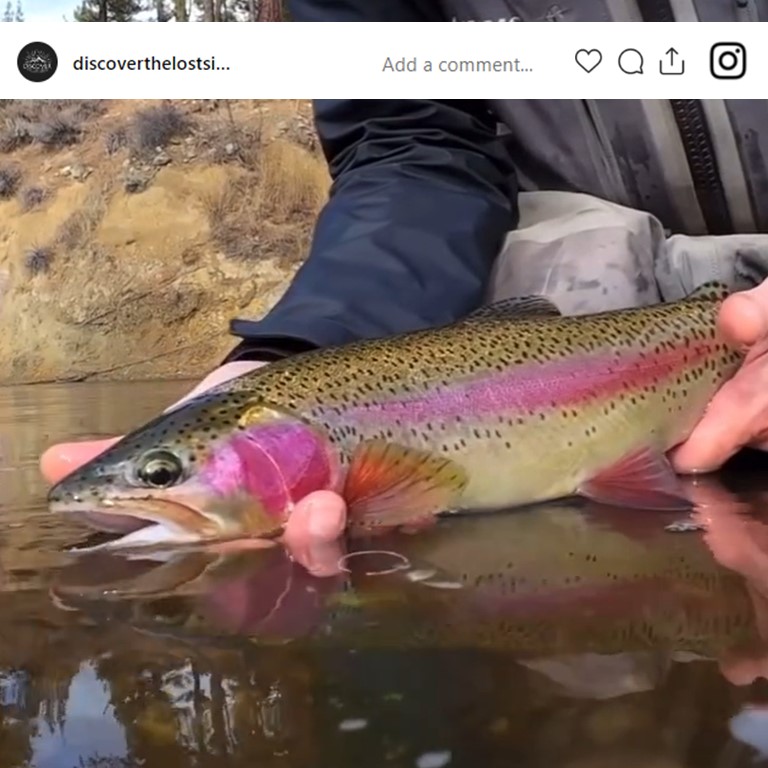A collaboration between the Indian Valley Innovation HUB, the Alliance For Workforce Development, and the Lost Sierra Chamber of Commerce
welcome home
move to the lost sierra california
Discover Plumas & Sierra Counties in the Lost Sierra, a region where natural beauty meets economic opportunity. Unlike the crowded spaces of Tahoe, the Lost Sierra offers a serene retreat with abundant recreational activities, making it an ideal location for entrepreneurs and job seekers alike. Rich in gold mining history and natural resources, this area fosters creativity, resilience, and innovation across sectors like outdoor recreation, agriculture, and ranching. With its stunning landscapes of forests, lakes, and mountains, the Lost Sierra supports sustainable industries and technological advancements, providing a unique blend of opportunities for professional growth and lifestyle richness. From Graeagle to Chester, through Portola, Quincy, and Downieville, Plumas & Sierra Counties are ripe with business opportunities for those wanting an authentic, adventurous lifestyle and looking to level-up in their career.
Visit for a weekend of lakeside wonder. Stay for a lifetime of opportunity.
- Natural Beauty
- Ideal For Families
- An Affordable Dream
- Invest In Your Future
- Safe & Peaceful
- Friendly Community
- Clean Air & Water
- Great Quality of Life
- Perfect For Retirement
get to know the lost sierra
a better quality of life
choose here
The Lost Sierra region presents a unique lifestyle that merges serene natural beauty with a burgeoning economic and business environment, making it an ideal locale for both living and working. Residents enjoy a high quality of life with minimal traffic, easy access to outdoor activities, extensive opportunities for career advancement, and scenic commutes, enhancing both daily life and work-life balance.
residential or commercial
find a property
Not only is the Lost Sierra region a destination area for avid nature lovers and adventure seekers, but it is also a great place to live, with lower than typical median home prices for Northern California, and numerous affordable commercial opportunities. Both Sierra and Plumas Counties offer small, quiet communities away from the higher real estate costs of larger regional city clusters. Yes – we are talking about living the dream; to be able to work and live where you love to play!
Know the Facts
residential
The onset of the Covid 19 pandemic created an explosion of work from home and remote work opportunities, flooding the traditionally tourist-oriented areas of the Sierra Nevada with new residents seeking an outdoor mountain lifestyle and a slower pace of life. Many people from the Bay Area and the Sacramento Metropolitan region sought both rental properties and single-family homes in Lake Tahoe and Truckee. From the summer of 2019, to early 2022, the full-time population of these communities grew exponentially, leading to congested streets and crowded commercial districts, as well as overpopulated trails, beaches, and ski hills. Real estate prices increased substantially in all of Tahoe/Truckee during this period, and many owners of long-term rental properties sold their investment homes in order to cash in. This in turn, drove up the cost of an already shrinking rental market, and many median income households had to leave the region in search of more affordable housing.
During this same period, the high-tech business industry and new start-ups throughout the greater Reno area expanded substantially. From 2021 to 2022 Reno start-ups gained a record $1.4 billion in external funding, which was more than 15 times the amount raised only one year prior. With this increase, came an onslaught of new migrants to the area, seeking jobs in these industries. This substantial population growth of median to high income earners, put upward pressure on the real estate market. Reno is a reasonable commute from the Lost Sierra through the stunningly beautiful Sierra Valley. And if you are working remote, the commute is even shorter: 0.0 miles.
The median home price (not including luxury homes) in the Truckee region is now around $1,250,000, where the median price for similar properties from 2019 to 2020 was closer to $850,000. For the Reno area, the reported median price sits currently around $590,000. Compare these prices to the Lost Sierra with homes as low as the $200,000’s up to larger homes with acreage, and there are plenty of land properties available to build something new! Housing prices in the Grass Valley and Nevada City areas also have increased substantially, with a current median single family home price of $550,000, up from $425,000 in 2019. These increases have made areas with more affordable housing much more attractive to young families.
Although median prices in the Lost Sierra have also increased since 2019, the increase has been substantially less than in other mountain and foothill communities, creating the perfect market for first time home buyers in search of more affordable housing. More affordable housing is available in the Lost Sierra and with fewer people than Lake Tahoe and Truckee. In 2023, median prices for non-luxury homes in the area were around $400,000, and there is also ample opportunity to buy acreage and build a new home. Sales of vacant parcels in Plumas & Sierra Counties with a lot size between 1 and 20 acres ran between $8,000, and $300,000 in 2023, with a median price of $45,000 and an average price per acre of about $30,000. Building costs are significantly lower in this region as well when compared to Tahoe/Truckee or other parts of Placer and Nevada Counties.
And when you are not outdoors, there is also a rich local art and culture scene thanks to the Plumas Arts and Sierra County Arts Council with art exhibits, live performances at historic theaters, film festivals, and special events. Other unique art events include the Cowboy Poetry and Music Show in Vinton and the Sierra Valley Art and Ag Trail where you see working ranches, old barns, and different artisans at each location along the tour. Live music is available throughout the area, and it is also home to the annual High Sierra Music Festival in Quincy.
Commercial
Not only does the Lost Sierra region offer more affordable housing, but lower commercial real estate prices in the area also reduce the investment cost of new business start-ups.
For the last two years, there have been 36 MLS listed sales of small commercial properties throughout the region. These ranged from $110,000 to $695,000. The average sales price of these properties was $288,000, and the median price just $247,500. In comparison, there were 17 sales of small commercial properties in the Truckee and North Lake Tahoe areas in the last two years. These ranged in price from $329,000 to $2,000,000, with an average of $1,225,000, and a median cost of $1,300,000. Due to these significantly higher prices, most new business owners are typically forced to lease rather than purchase a space. In the Lost Sierra, on the other hand, there is greater opportunity to own your own commercial property.
The small towns and communities of the Lost Sierra draw large and increasing numbers of tourists, but feature a limited number of established businesses. In the Graeagle-Blairsden area, for example, there are only a few restaurants, two breweries, a few small shops, one hardware store, and one small market. This area draws large numbers of tourists from mid-April to the fall, with a limited range of options for shopping, dining, and services. Due to this gap between supply and demand, new businesses delivering a quality product or service have a chance at quick success by virtue of immediate visibility. In addition, the region is currently supported by a very small, and busy, population of contractors, plumbers, electricians, and heating/air services, and competent new tradespeople are typically welcomed with open arms.
During the winter of 2022, two new residents to Plumas County started searching for a place to open a small restaurant. They were able to find a newer, 900 square foot building backing the recently refurbished River Walk area along Highway 70 in Portola, and they purchased the property for $240,000 in June of that year. The cost of the interior remodel, new patios, and fencing ran to approximately $120,000, and took 4 months to complete. They established a small bistro-deli style eatery with a large outdoor dining area and opened the doors in April of 2023 without any paid advertising. Within the first six months of operation the gross income for the bistro was over $250,000 (average of $42,000 per month). The bistro has continued to gain popularity since that time, and the owners are now looking forward to a very busy spring and summer of 2024, including an expansion of the building in order to extend the size of the kitchen.
things to do
living life recreating
“All nature is doing her best each moment to make us well—she exists for no other end. Do not resist her.” – Henry David Thoreau
If work/life balance is your ultimate quest, you will find it here in the Lost Sierra – a four-season outdoor recreation wonderland. The Lost Sierra encompasses Plumas and Sierra Counties with 3,500 combined square miles making the geography larger than the state of Delaware. US Forest Service land comprises over 75% of the area along with over 1,000 miles of crystal clear, trout filled rivers and streams that wind through these lands. The opportunities for a recreation-based lifestyle are unparalleled appealing to hikers, trail runners, backpackers, on and off-road cyclists, , backcountry skiers and snowboarders, equestrians, Off Highway Vehicle (OHV) snow and dirt enthusiasts, overlanders, adventure moto riders, golfers, birders, rock hounds, geocachers, anglers, hunters, whitewater kayakers, climbers, sunseekers, boaters, swimmers, paddleboarders, gold prospectors, and nearly whatever else you can think of partaking outdoors. You name the sport, and more than likely you will find it here with new adventures waiting for you to discover. Many of our quaint towns are only two hours or less from Truckee/Tahoe and Reno, but the difference is, there are only about 8 people per square mile here. So, tranquility and solitude abound amongst the evergreen and deciduous forests, high alpine valleys loaded with colorful wildflowers, refreshingly crisp waterways, star filled skies, and traffic-free experience of our area. And winters here are easier than most in the Sierra Nevada Mountains when you compare Quincy at 95 inches of snow in a good year to Truckee with an average annual snowfall of well over 200 inches.
What you are about to read is all true, and we are revealing the recreational lifestyle secret of the Lost Sierra and sharing it with you. And when you live here, this will all be in your backyard.
Lots of boating, jet skiing, and non-boating lakes await you here deep into the mountains and off the beaten path. Go big at Lake Almanor, the largest lake in Plumas County, with 52 miles of shoreline and fishing (year-round), lakeside camping, boating, jet skiing, and spectacular views of Mount Lassen. Then, throw a line in at nearby Butt Valley Reservoir that is known for its abundance of trophy sized trout. Other larger lakes throughout the area that are great for fishing, swimming, padding, and boating include Frenchman Lake, Lake Davis, and Bucks Lake – a high alpine lake that is especially breathtaking in the fall. Or if you prefer small, serene lakes then the Lakes Basin is the spot with over 20 high alpine lakes accessible via hiking trails.
The North, Middle and South forks of the Feather River flow through Plumas County, while the Yuba and Downie Rivers flow through Sierra County, which combined contribute most of California’s water supply. All are amazing trout fishing destinations at the end of the work day or when spending a weekend out tickling the water with your dry flies. And don’t miss out on the secret swimmin’ holes either.

Imagine riding the best mountain bike trail in California (and ebike legal) and home to the legendary Downieville Classic Bike Race right after your last work call. Well, you can. You can also ride Mills Peak, Mount Hough, South Park and coming soon Beckwourth Peak Trail out your back door or a short drive from the house. These trails are amongst the top mountain biking trails in Northern California thanks to Sierra Buttes Trail Stewardship who will continue to build new and maintain singletrack for you to ride every year.
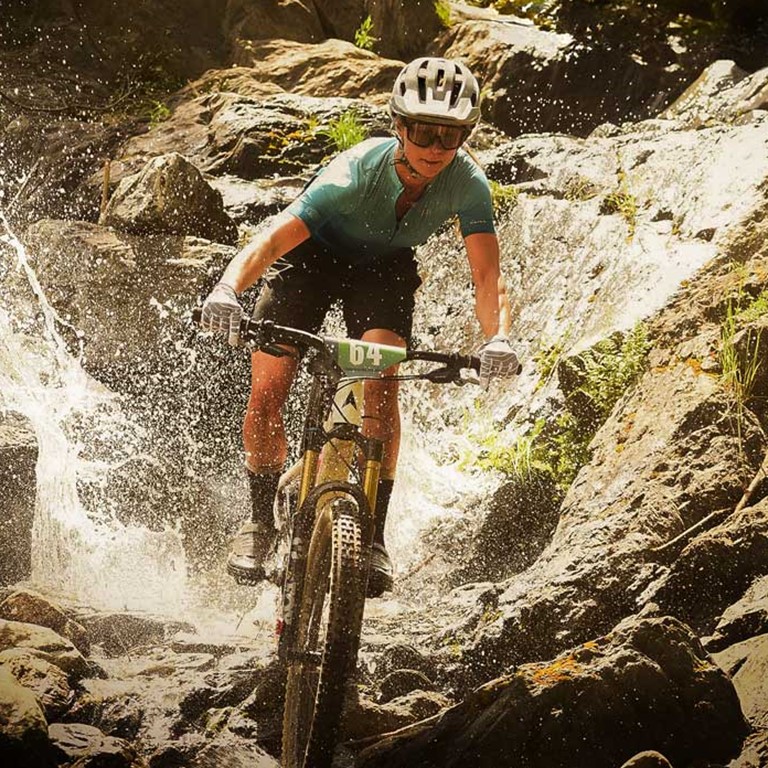
Long, post-work, veg-out skinny tire rides are on tap as you seek out wide open alpine valleys loaded with wildflowers, birds, and nature’s offerings. Popular road rides include Lake Almanor, the climb up and descent down Highway 49 from Downieville to the Sierra Buttes (known as the “Sierra Alps” ride), and a spin around the majestic Sierra Valley, the largest sub-alpine meadow in North America.
If gravel is your thing, there are thousands of miles of forest service roads to ride. That’s thousands of miles of gravel. This area is the home to the Lost and Found Gravel Festival, the self-proclaimed Gravel Capital of the West and inspiration for the Lost on Purpose Gravel Film profiling the amazing topography and mountain routes in the area.
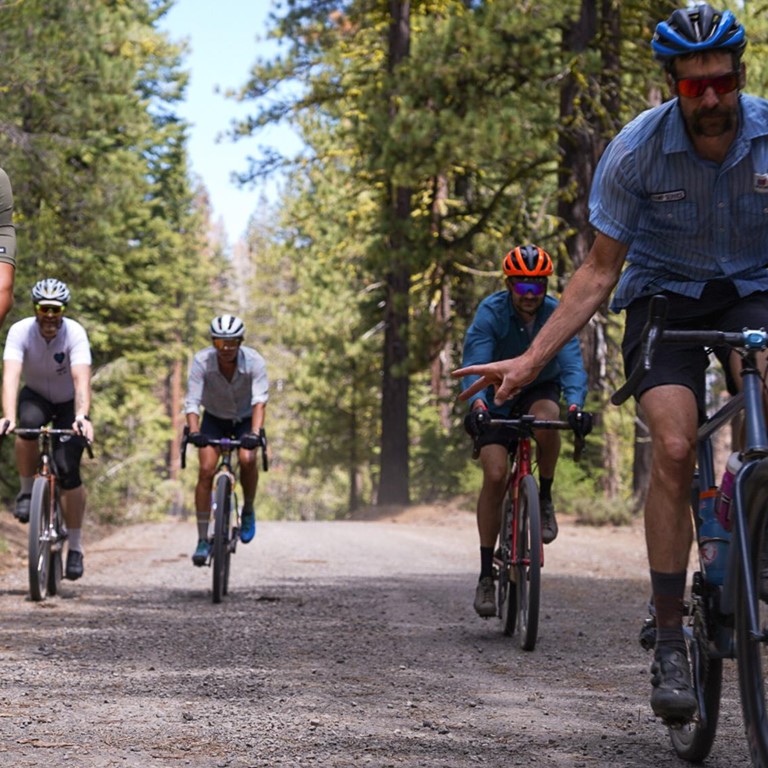
There are 4,482 miles of motorized forest service roads in Plumas National Forest alone and hundreds of miles of challenging singletrack in Plumas and Sierra Counties. Some claim that the best, most challenging dirt bike moto trails in Northern California are in the Lost Sierra. With so many miles, there are many options to explore every day after work, whenever and wherever you want. The Forest Service even mapped out a 150-mile long Backcountry Discovery Trail that regular high clearance vehicles can navigate along with many areas that can be enjoyed by 4×4’s, overlanders and adventure motos.
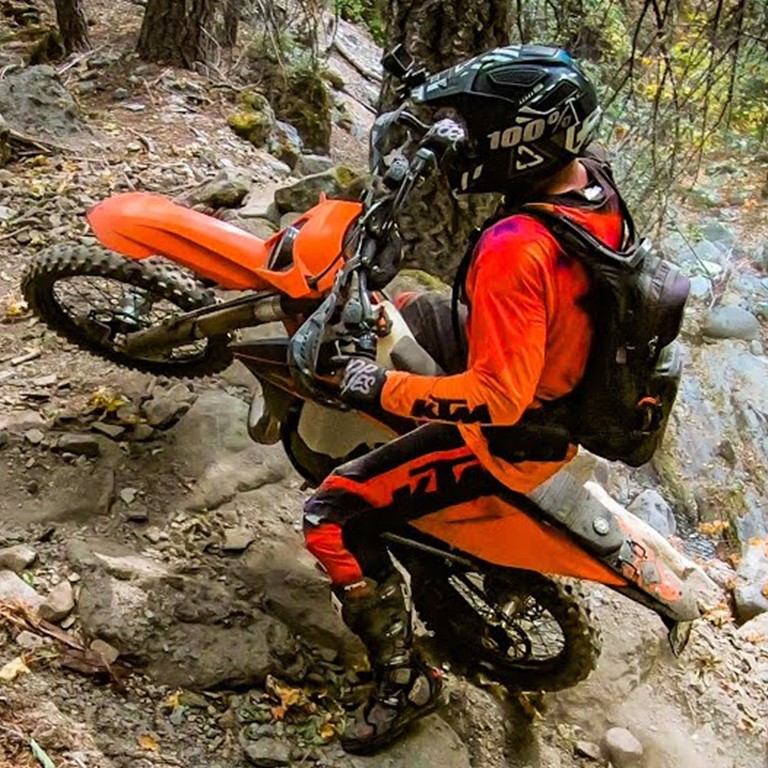
The Feather River features Class II to Class V rapids that challenge and thrill kayakers and rafters that are celebrated with an annual festival. Many people come to this area just to run this river and look past the other rivers like the Downie, Yuba and even Pauley and Lavezzola Creeks that, when they are flowing hard, they are runnable for expert kayakers.
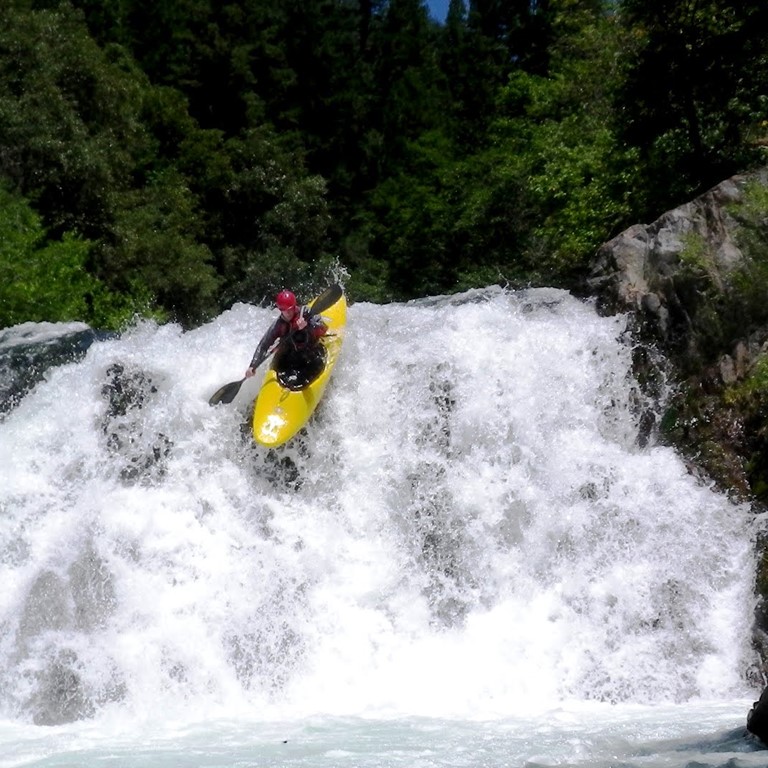
The Lost Sierra region features 11 different golf courses nestled amongst evergreens and picturesque mountain peaks. Oh, and they are not crowed with people either. There are courses that appeal to all levels of golfers and each with amazing views of the Sierras.
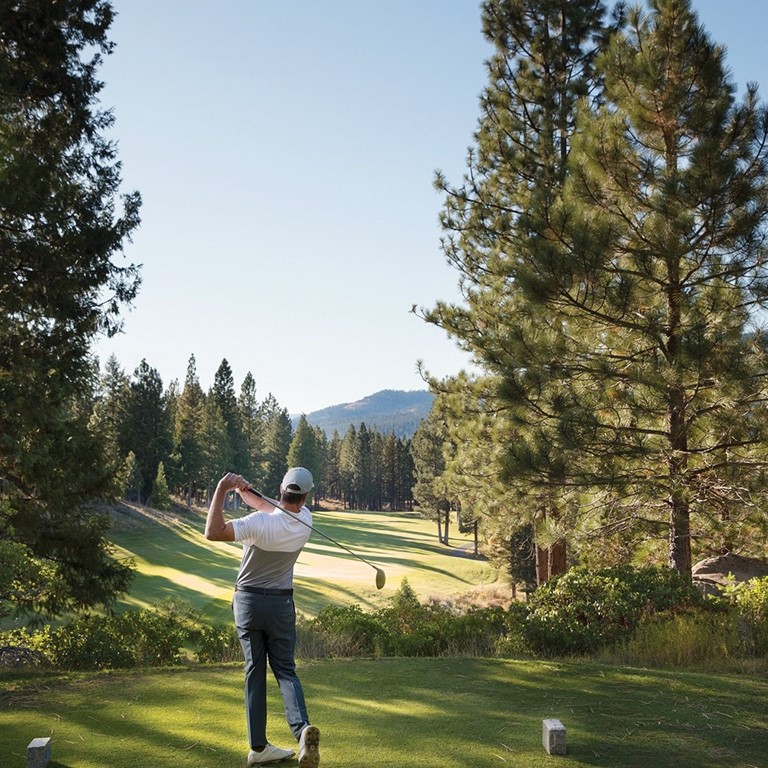
It is not uncommon to be driving home from work and look over to see a bald eagle perched on a fence post eyeing its next meal. There are nearly 300 species of birds that spend part or all year in the region and the Sierra Valley is the primo spot to see many of them. And whatever you do, keep your binoculars in your car at all times!

Ok maybe this is not an outdoor activity. But breweries are typically immediately sought following said outdoor activity. We have multiple breweries in our area including The Brewing Lair, Ronin Fermentation Project, Quintopia, Timber House Brewery, Rich Bar Taproom and many esteemed local watering holes like the St. Charles, the Bank Club, and the Plumie.
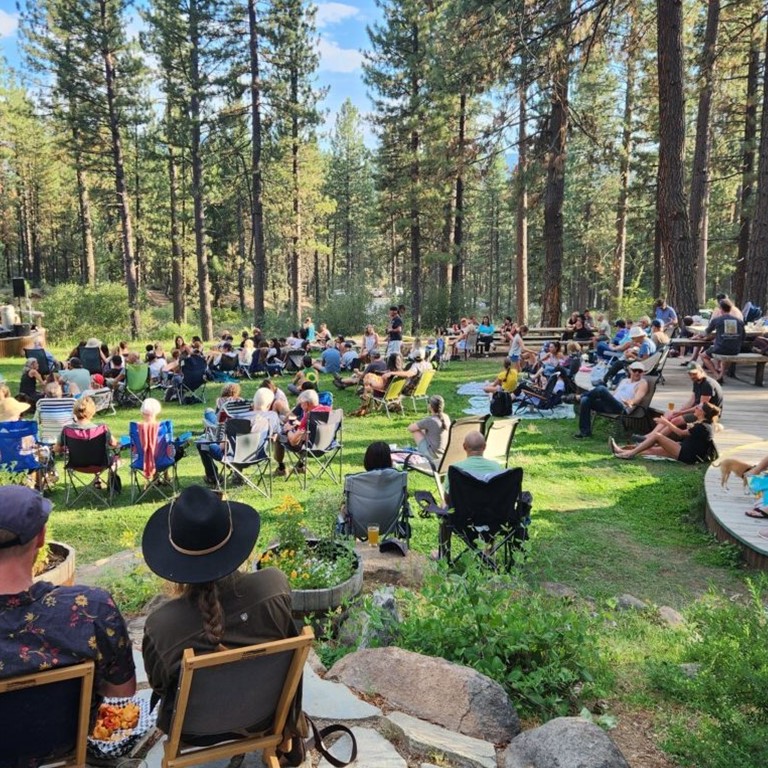
Things quiet down in the area during the winter months, but there are still a lot of first tracks and fun things to do. Pristine mountains for miles are plentiful for snow sports, family outings, and WITHOUT THE SKI CROWDS AND TRAFFIC!
The snowmobiling options are many with groomed and powder awaiting to take you to the most majestic locations out in the middle of nowhere. Lakes Basin has 38 miles of groomed trails and countless miles of backcountry adventure, steeps and chutes. There are similar day long excursions to be had in other locations including Bucks Lake (100 miles of groomed trails), LaPorte (80 miles of groomed trails), Lake Davis, Bassetts, Chester and many more. You will never grow tired of finding a new places to take your sled.
Meanwhile, backcountry skiers and snowboarders rejoice at the sight of seeing nearly no one at all. Fresh powder, untracked lines and spring corn are everywhere in the high country with a great variety of terrain. Eureka Peak – originally called Gold Mountain since it produced $25 million in gold – rises above Johnsville Historic Ski Bowl and is a favorite backcountry spot with Mount Lassen in striking distance to the north. The Ski Bowl is also a great place to sled with the kids.
The marquis winter event is the Historic Longboard Race Revival Series at Johnsville Historic Ski Bowl on the third Sunday of January, February and March. Contestants dress in era correct clothing, strap into leather boots and bindings and navigate the hill on skis 9 to 16 feet in length. This is the land where Dope is King! and having some luck, a little bit of skill, and a great attitude are keys to winning.
Sometimes it is challenging to get the littles to fall asleep. Driving your kid(s) around to get them to conk out was never better experienced than on the Lost Sierra highway curves. And driving them around for fun is always something to do. Many sections of these highways are Scenic Byways that run along Wild and Scenenic Rivers as well as creating summertime funtime connections through the Gold Lake Highway across Lakes Basin. And to the north, the Volcanic Legacy Byway begins at Mount Lassen and runs all the way to Crater Lake if you are interested in an extended trip. If the kids like trains, make sure to take them to the world-renowned Western Pacific Railroad Museum in Portola for some amazing history and a train ride. Leaf peeping and wildflower leaping drives abound in this area that attracts many motorcycle and auto clubs.
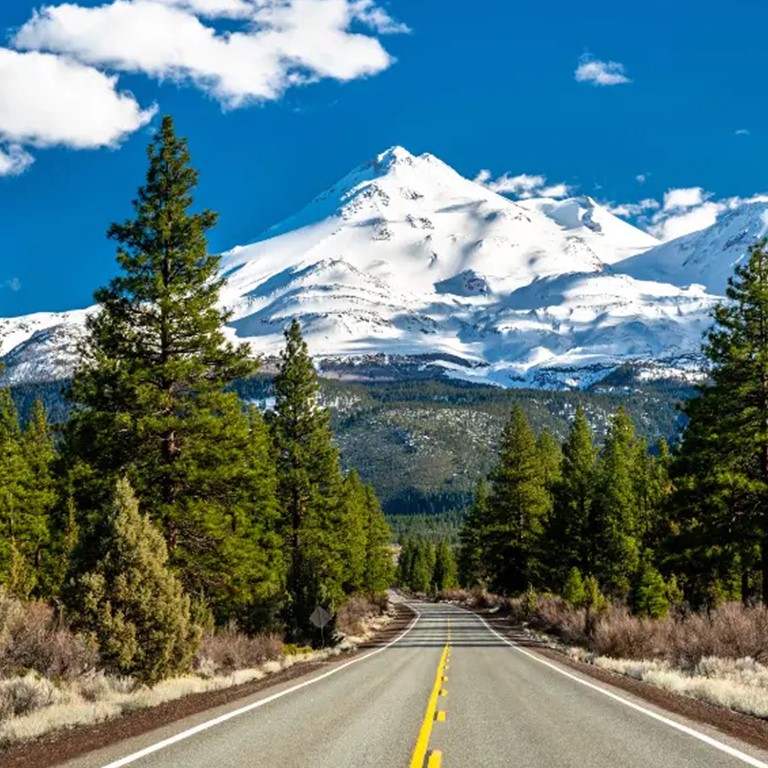

The Lost Sierra Economy
the land of opportunity
Not only is the Lost Sierra region a destination area for avid nature lovers and adventure seekers, but it is also a great place to live, with lower than typical median home prices for Northern California, and numerous affordable commercial opportunities. Both Sierra and Plumas Counties offer small, quiet communities away from the higher real estate costs of larger regional city clusters. Yes – we are talking about living the dream; to be able to work and live where you love to play!
Unique Lifestyle
the land of Growth
Not only is the Lost Sierra region a destination area for avid nature lovers and adventure seekers, but it is also a great place to live, with lower than typical median home prices for Northern California, and numerous affordable commercial opportunities. Both Sierra and Plumas Counties offer small, quiet communities away from the higher real estate costs of larger regional city clusters. Yes – we are talking about living the dream; to be able to work and live where you love to play!
Growing Industries
and Employment Trends
The Lost Sierra’s economy thrives across diverse sectors, including outdoor recreation, hospitality, agriculture, healthcare, and technology, driven by its stunning natural landscapes and a strategic approach to economic development. The region excels in creating a symbiotic relationship between industries like outdoor recreation and hospitality, fostering a dynamic environment for job growth and enhancing the quality of life for its community.
Initiatives aimed at revitalizing main streets and improving access to natural resources are underway, focusing on developing a year-round recreation economy, addressing housing and labor challenges, and enhancing infrastructure such as transportation and public facilities. These efforts, supported by local economic development entities, aim to uplift the entire economy, benefiting sectors like lodging, dining, and entertainment, and making the Lost Sierra an enticing prospect for professionals and entrepreneurs.
With significant employment opportunities presented by major sectors and employers, from government services to Sierra Pacific Industries, the Lost Sierra positions itself as an ideal destination for those seeking career growth in a community that cherishes its natural assets and the well-being of its inhabitants.
The Lost Sierra’s
Economic History
The Lost Sierra, a region in the northern Sierra Nevada of California, has a rich history shaped by various industries, including mining, logging, cattle ranching, and later, recreation and conservation. Its history reflects the broader economic shifts and environmental impacts similar to other parts of the Sierra Nevada, yet with its unique characteristics and developments.
Mining has been a pivotal industry in the Lost Sierra, starting with the California Gold Rush in the mid-19th century. Although the initial gold discoveries in 1848 occurred further south near Sacramento, the entire Sierra Nevada range, including the Lost Sierra, experienced an influx of miners searching for gold. Placer mining, which involves washing sediments in a pan to separate gold, was prevalent, followed by more invasive techniques like hydraulic mining.
Aside from gold, the region was also known for mining other metals. By the late 19th and early 20th centuries, hard rock mining for gold, silver, copper, and other minerals became common. These activities left behind a plethora of abandoned mines.
Gold remains nestled within these hills, yet the community insists on methods of extraction that are both safe and environmentally sustainable. Without adherence to these principles, residents now advocate for no extraction whatsoever.
The cattle and ranching industry has been a significant part of the Lost Sierra’s history. As early as the mid-19th century, following the influx of settlers during the Gold Rush, the expansive and fertile valleys of the Lost Sierra provided ideal conditions for grazing cattle and other livestock. Ranching became a staple of the region’s economy, with families establishing homesteads and ranches that often spanned generations. These ranches supplied meat, dairy products, and other agricultural commodities to local communities, mining camps, and growing markets in California. Over the years, the ranching industry faced its own set of challenges, including land disputes, changes in land use policies, and environmental concerns. Despite these challenges, ranching remains an integral part of the Lost Sierra’s cultural and economic landscape, contributing to its rural character and supporting local traditions of agriculture and land stewardship. The legacy of ranching also underscores the region’s transition from a focus on extraction industries to a more diversified economy that includes agriculture, tourism, and conservation.
The vast forests of the Lost Sierra provided another critical resource: timber. Logging in the area began in earnest in the late 19th century to supply building materials for growing cities and mining operations. The industry boomed, with logging companies harvesting vast amounts of timber. The advent of railroads facilitated the transport of logs to mills and markets, further accelerating logging activities.
Railroads themselves were instrumental in the development of the Lost Sierra, not only supporting logging operations but also mining by providing a means to transport ore. The logging industry also led to the establishment of sawmills in the region, transforming local economies.
As the most accessible ores were depleted and logging living and are seeking to advance their careers. Here, the launch of innovative startups sparks the creation of new job opportunities, thereby enhancing the local economic landscape. We aim to draw a diverse group of individuals: entrepreneurs ready to embark on new business ventures, and skilled professionals in search of rewarding careers. By joining forces, this dynamic workforce will propel the Lost Sierra towards prosperity, establishing it as a destination for those who wish to merge their professional goals with a lifestyle of growth, innovation, and adventure, all within a community that cherishes progress.
economic hubs in the Lost Sierra
Post-Dixie Fire, these communities stand at a pivotal moment of regeneration, presenting opportunities for construction, landscaping, beauty and wellness, and food service entrepreneurs. The demand extends to forestry, social services, and labor, marking a critical time for revitalization and growth in these areas.
This destination is a haven for enthusiasts of boating, fishing, and water sports, standing as the pinnacle of Plumas County’s elevation and beauty. It draws celebrities and athletes alike, offering a high standard of living amidst stunning scenery. Entrepreneurs have a prime landscape to innovate in leisure and outdoor recreational businesses, with the Lake Almanor Area Chamber of Commerce providing insights into local opportunities and industry demands.
Downieville beckons with its enchanting blend of adventure and tranquility. Nestled amidst breathtaking landscapes, the town boasts epic mountain biking trails and advanced trail systems that wind through pristine natural spaces. As the county’s seat, Downieville offers employment opportunities within the court system, government buildings, and various administrative offices. Students here enjoy the luxury of walking to school along safe, quiet streets, with small class sizes fostering intimate connections among peers. As the budding art scene flourishes and the historic Yuba Theater hosts a variety of performances, Downieville’s Gold Rush charm create a unique allure that captures the heart of every visitor and makes them want to stick around.
Graeagle enriches Plumas County’s economic tapestry with its blend of rustic charm and entrepreneurial spirit. Known for its golf courses, specialty shops, and outdoor adventure services, Graeagle offers a picturesque setting for businesses in tourism, retail, and hospitality. This community, with its tranquil environment and rich local culture, invites entrepreneurs to be part of a growing market that values sustainability, creativity, and quality of life, making it an enticing prospect for those seeking to combine business with pleasure in a serene mountain setting.
Loyalton, the largest town and the sole city in Sierra County, embodies a thriving community spirit and abundant opportunities. With its expansive lots and ample housing options, including affordable alternatives, Loyalton offers a welcoming environment for families seeking a place to call home. Boasting a larger school and a vibrant community, residents enjoy access to a diverse range of educational and recreational activities. Additionally, as the proud host of the annual Timber Fest, Loyalton celebrates its rich history and forestry heritage, showcasing the town’s unique character and vitality.
Located near Reno, NV, Portola is uniquely positioned for businesses in logistics, warehousing, and those aiming to access both Californian and Nevadan markets. Its status as Plumas County’s sole unincorporated community presents unique opportunities in outdoor recreation, manufacturing, and cross-border services.
Sierra City, just under 20 minutes from Downieville, CA, is a hidden gem nestled along the Pacific Crest Trail, offers a serene escape amidst majestic wilderness, more than 20 Alpine lakes, and the crowning glory of Sierra County, the towering Sierra Buttes. Students are transported to Downieville for school, ensuring access to quality education while preserving the town’s intimate atmosphere. With several charming restaurants and the captivating Kentucky Mine, now a museum, Sierra City invites exploration and discovery at every turn. Here, history intertwines with natural beauty, creating a haven for adventurers and history buffs alike.
Sierraville, a tranquil retreat amidst vast farmland and breathtaking vistas, offers a serene escape from the hustle and bustle of city life. With its expansive open spaces and panoramic views, the town embodies the essence of rural charm and natural beauty. Nestled in close proximity to areas like Truckee and Tahoe, Sierraville provides convenient access to outdoor adventures without the high prices of its neighboring cities. Here, residents can savor the simplicity of small-town living while immersing themselves in the boundless wonders of nature.
Celebrated for its exceptional quality of life, Quincy, the county seat, offers a dynamic environment for business endeavors. With its mix of dining, arts, and unique services, the town is a hub for culinary, cultural, and retail entrepreneurs looking to tap into its lively community spirit.
Local Support Systems:
Business and Employment Resources
The Lost Sierra region is supported by a robust network of entities dedicated to fostering economic growth, supporting local businesses, and enhancing employment opportunities. These entities offer a variety of resources ranging from financial assistance to networking opportunities, training, and development programs.
Plumas-Sierra Rural Electric Cooperative
(PSREC)
In the same way we brought electricity to our rural region that was not served by other utilities, PSREC management and Board of Directors saw and fulfilled a need to offer affordable telecommunication and Internet service in areas where it was not previously available.
Alliance for Workforce Development
(AWFD)
AFWD provides a wide range of services aimed at enhancing workforce development in Plumas County. These services are designed to support both employers and job seekers by offering financial assistance, supportive services, career development opportunities, and access to a network of potential employees. With initiatives such as wage reimbursements for employers, tax credits, and various funding opportunities, AFWD is committed to fostering a sustainable and thriving workforce in the region.
The Indian Valley Innovation Hub
(IVIH)
IVIH serves as a pivotal force for innovation and business expansion in Plumas County, under the auspices of the Plumas Sierra County Fair Foundation. It establishes a fertile environment for both emerging and seasoned businesses through a collaborative ecosystem that facilitates networking, the exchange of ideas, and access to essential business resources. Among its key offerings are the Plumas Business Directory, a mobile app connecting consumers with local businesses; the Made in Plumas County Program, which promotes local artisans and their products; the forthcoming Plumas Business Resources Directory for financial and professional assistance; the Plumas County Business & Economic Update for the latest in local economic news; Entrepreneur Rallies for community-driven idea sharing; and Business Development Support to navigate business challenges. Together, these initiatives underscore IVIH’s crucial role in driving economic development, job creation, and technological advancement in Plumas County.
ChicoSTART
A leading iHub in the North State
ChicoSTART stands out as a leading iHub in the North State, offering an extensive array of resources designed to foster the growth and success of startups and entrepreneurs. With a commitment to mentoring, ChicoSTART connects emerging startups with a diverse group of skilled professionals from the local community and beyond, providing invaluable guidance, connections, and expertise. As an Amazon Web Services Activate Provider, ChicoStart gives member startups access to free tools and expert support, further accelerating their growth. Additionally, their On-Demand Virtual Entrepreneurship Toolkit Series offers workshops aimed at building a solid foundation for new ventures. The OpenGrants.io Portal and partnerships with Grow with Google and BCAC.TV Media Resources further enhance ChicoSTART’s offerings, providing comprehensive support in grant finding, digital marketing, and media resources. These initiatives, combined with collaborative webinars from a host of value-add partners, ensure that ChicoSTART’s members have the tools and knowledge to succeed and thrive in today’s competitive marketplace. For more information, contacting ChicoSTART directly via email at info@chicostart.com is recommended.
The Sierra Small Business Development Center
(SBDC)
SBDC stands as an essential support hub for Plumas County’s small businesses, offering a suite of free services including business advising, consulting, and a variety of training workshops and webinars. Tailored to aid businesses at every stage, from planning and marketing to financial management and accessing capital, these services are available both in-person and online. The SBDC’s assistance extends to market research, financing strategies, COVID-19 recovery advice, and specialty programs catering to specific industry needs, all aimed at fostering business growth and resilience in a competitive landscape. Small businesses looking to leverage these opportunities for overcoming challenges and achieving success can sign up for counseling and explore further resources on upcoming trainings and webinars directly through the Sierra SBDC website.
Anne Kassebaum Consulting: Anne Kassebaum is a business consultant specializing in career development and recruitment consulting, focusing on supporting women in their professional journeys. She offers personalized coaching sessions, helping clients to define and pursue their career goals by identifying their unique strengths and crafting strategies tailored to their individual needs. Anne’s expertise covers various career stages, from initial career choices to advancements and transitions, providing guidance through the job search process and opportunity identification. Anne also aids businesses in finding and hiring suitable candidates, ensuring the alignment of talent with organizational roles. She is involved in all aspects of the process, including job description creation and candidate selection, facilitating an efficient hiring experience for companies. Additionally, Anne designs and delivers training and development programs targeted at improving individual and organizational skills. These programs are customized to address specific needs such as enhancing communication, leadership qualities, and team performance, aiming to boost overall effectiveness and achieve professional growth. Anne Kassebaum’s approach to career and recruitment consulting makes her services invaluable for individuals looking to navigate their career paths and for businesses seeking to enhance their teams.
Annika Peacock: Annika Peacock is a business and technology instructor at Lassen College, and an AI-focused digital transformation consultant. She brings a realistic, local perspective on the unique challenges faced by small businesses in far Northern California, such as limited access to high speed internet and sparse/aging tech resources. Her work in social media management, business process analysis, and AI implementation is particularly relevant, as these are critical areas for small businesses looking to expand their reach and efficiency in a competitive market. She can provide practical advice and strategies on leveraging AI for business growth, customer engagement, and operational efficiency, tailored to the realities of rural business operations. Moreover, Annika’s teaching background and ability to demystify complex subjects make her an ideal speaker for small business owners who may be new to AI and looking for ways to integrate these technologies into their business models. Her insights can help bridge the gap between rural business practices and the latest technological advancements, empowering local businesses to thrive in an increasingly digital world.
You Have a Decision to Make
So, now you have read all the facts. Do you want to keep going with your current existence or do you want to find a way to live a richer life in the Lost Sierra? Can you go on knowing this unique place exists that is now beckoning you?
You have a decision to make. Make it a good one and choose the Lost Sierra.
As we unveil the myriad opportunities that the Lost Sierra has to offer, from its supportive ecosystems for entrepreneurs to the diverse job prospects across various industries, we invite you to embark on a journey of professional and personal growth in this unparalleled region.
Whether you’re an aspiring entrepreneur ready to launch your dream venture or a job seeker looking for meaningful employment in a community that values innovation and hard work, the Lost Sierra beckons with open arms. Embrace the chance to meld your career ambitions with a lifestyle that’s rooted in the beauty and tranquility of the great outdoors. Let the Lost Sierra be the backdrop to your next big adventure, where you can thrive professionally while enjoying a quality of life that’s second to none. We encourage you to explore what the Lost Sierra has in store for you—make it your new home, where your dreams and aspirations can soar to new heights.
